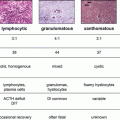Fig. 33.1
Diagram showing feedforward and feedback mechanisms governing hypothalamic–pituitary–testicular function
The willingness of men to discuss the symptoms of hypogonadism, and the availability of new, effective, and safe treatment approaches have increased substantially the number of men being evaluated and treated for hypogonadism. Men with hypogonadism present with symptoms and signs of androgen deficiency or with infertility. The symptoms are nonspecific, however, and the signs may be subtle. Other than azoospermia, the semen parameters that distinguish fertile from infertile men are indistinct. A careful medical history and physical examination to include measurement of testicular size is essential. Most often the total testosterone level is sufficient to confirm the clinical diagnosis of hypogonadism, with most reference ranges approximating 300–1,000 ng/dL. The level of sex-hormone-binding globulin (SHBG) is an important determinant of total testosterone, and increases or decreases in SHBG produce parallel changes in total testosterone. When total testosterone levels are borderline, or the total testosterone level is not consistent with the clinical findings, free testosterone or non-SHBG (bioavailable) testosterone levels should be measured. Direct analog assays for testosterone are inaccurate and should not be used to assess free testosterone.
Stay updated, free articles. Join our Telegram channel

Full access? Get Clinical Tree




